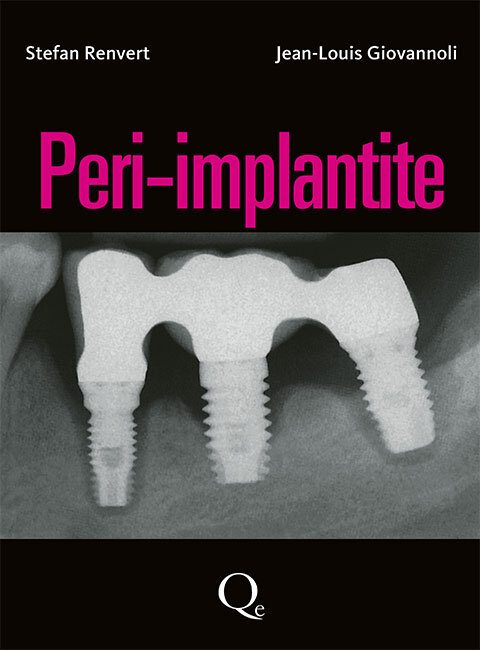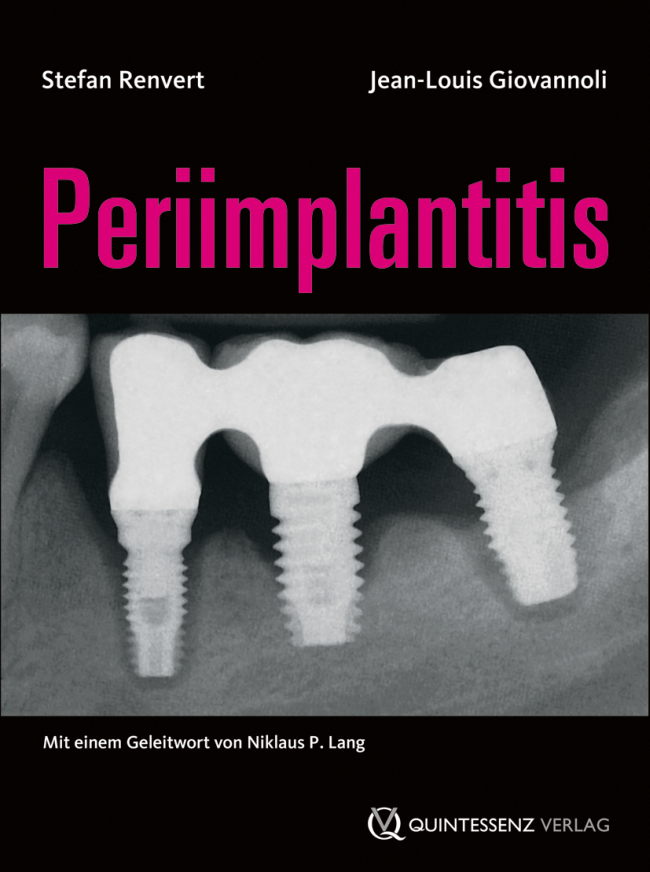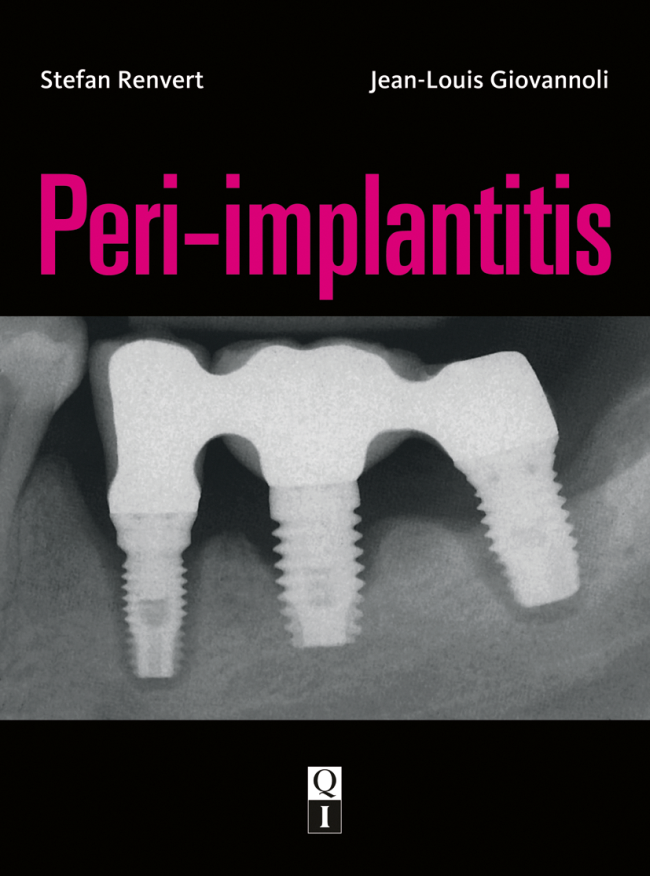International Journal of Oral Implantology, 3/2022
PubMed-ID: 36082658Seiten: 213-248, Sprache: EnglischMonje, Alberto / Amerio, Ettore / Cha, Jae Kook / Kotsakis, Georgios / Pons, Ramon / Renvert, Stefan / Sanz-Martin, Ignacio / Schwarz, Frank / Sculean, Anton / Stavropoulos, Andreas / Tarnow, Dennis / Wang, Hom-LayPeri-implantitis is an infectious disease that leads to progressive bone loss. Surgical therapy has been advocated as a way of halting its progression and re-establishing peri-implant health. One of the most challenging but crucial tasks in the management of peri-implantitis is biofilm removal to achieve reosseointegration and promote the reduction of peri-implant pockets. A wide variety of strategies have been used for implant surface decontamination. Mechanical means have been demonstrated to be effective in eliminating calculus deposits and residual debris; however, the presence of undercuts and the grooves and porosities along the roughened implant surface make it difficult to achieve an aseptic surface. In conjunction with mechanical measures, use of chemical adjuncts has been advocated to dilute bacterial concentrations, destroy the bacteria’s organic components and eliminate endotoxins. Pharmacological adjuncts have also been recommended to diminish the bacterial load. Other strategies, such as use of lasers, implantoplasty and electrolysis, have been suggested for implant surface decontamination to promote predictable clinical and radiographic outcomes.
Schlagwörter: dental implant, dental implantation, peri-implant endosseous healing, peri-implantitis
Conflict-of-interest statement: The authors declare that they have no direct conflicts of interest. Dr Monje owns royalties to a peri-implantitis kit that includes burs for mechanical detoxi
International Journal of Oral Implantology, 4/2021
PubMed-ID: 34726848Seiten: 385-399, Sprache: EnglischMonje, Alberto / Amerio, Ettore / Farina, Roberto / Nart, José / Ramanauskaite, Ausra / Renvert, Stefan / Roccuzzo, Andrea / Salvi, Giovanni E / Schwarz, Frank / Trombelli, Leonardo / Wang, Hom-LayPeri-implant diseases at implant sites represent the most considerable concern for many dental clinicians nowadays due to their detrimental effect on implant longevity. Preventive measures include patient education and motivation, supportive peri-implant therapy and routine assessment of the hard and soft tissues. Nevertheless, the reliability of clinical parameters to monitor peri-implant conditions is subject to debate. As such, the primary purpose of the present review was to gain further insight into the diagnostic accuracy of probing as a clinical tool to monitor dental implants and assist clinicians in preventing peri-implant diseases. Studies have recommended periodic probing to monitor the condition of the peri-implant tissues. Increased probing pocket depth, profuse bleeding on probing and suppuration at implants are clinical signs that have been associated with peri-implantitis; thus, if these clinical parameters are present, radiographic assessment is encouraged to make a definitive diagnosis considering potential inaccuracies related to local and/or systemic factors identified in the present review.
Schlagwörter: complications, diagnostic procedure, peri-implantitis, surgical
Conflict-of-interest statement: The authors declare there are no conflicts of interest relating to this study.
International Journal of Periodontics & Restorative Dentistry, 5/2020
DOI: 10.11607/prd.4299, PubMed-ID: 32926007Seiten: 767-774, Sprache: EnglischGkikas, Georgios / McLaughlin, Mark / Renvert, Stefan / Polyzois, IoannisThe aim of this study was to compare the effect of an autogenous blood concentrate (L-PRF) with the effect of white porous titanium granules (WPTG) on buccal bone remodeling. These materials were used to graft the void between the implant and the buccal bone following immediate implant placement. Clinical measurements were made at two time points, and the mean buccal bone horizontal dimension at placement was 2.94 ± 0.59 mm for L-PRF and 3.49 ± 0.99 mm for WPTG. At reentry, the values were 1.19 ± 0.90 mm and 2.12 ± 0.87 mm, respectively. Overall, there was no difference observed in the performance of the two materials regarding buccal bone resorption.
Quintessence International, 4/2016
DOI: 10.3290/j.qi.a35132, PubMed-ID: 26574612Seiten: 293-296, Sprache: EnglischSchwarz, Frank / Becker, Kathrin / Bastendorf, Klaus-Dieter / Cardaropoli, Daniele / Chatfield, Christina / Dunn, Ian / Fletcher, Paul / Einwag, Johannes / Louropoulou, Anna / Mombelli, Andrea / Ower, Philip / Pavlovic, Pedja / Sahrmann, Philipp / Salvi, Giovanni E. / Schmage, Petra / Takeuchi, Yasuko / Van Der Weijden, Fridus / Renvert, StefanAir polishing was introduced as an alternative approach for the supra- and submucosal biofilm management at dental implants. An international expert meeting involving competent clinicians and researchers took place during the EUROPERIO 8 conference in London, UK, on 4 June 2015. Prior to this meeting a comprehensive systematic review dealing with the efficacy of air polishing in the treatment of peri-implant mucositis and peri-implantitis was prepared and served as a basis for the group discussions. This paper summarizes the consensus statements and practical recommendations on the clinical application of air polishing for the management of peri-implant mucositis and peri-implantitis.
Schlagwörter: air polishing, peri-implantitis, peri-implant mucositis, therapy
Parodontologie, 2/2014
Seiten: 153-160, Sprache: DeutschRenvert, Stefan / Persson, Gösta RutgerDa ein Nachsorgekonzept die Gesunderhaltung der periimplantären Strukturen zum Ziel hat, muss der Behandler bei der Erstellung eines geeigneten Behandlungsplans für eine individuelle unterstützende Therapie sowohl die lokalen als auch die patientenbezogenen Risikofaktoren für die Entstehung einer Periimplantitis erheben. Es ist dokumentiert, dass Raucher und Patienten mit Parodontitis in der Anamnese ein erhöhtes Risiko für Periimplantitis haben. Da tiefe parodontale Taschen als Reservoir für Mikroorganismen dienen können, ist eine bereits bestehende Parodontalerkrankung vor einer Implantation zu behandeln. Die auf den Implantaten befestigte Suprakonstruktion ist so zu gestalten, dass der Patient eine adäquate Mundhygiene erzielen kann. Zu Beginn werden Kontrollsitzungen in Intervallen von 3 Monaten empfohlen. Später kann das Intervall an die individuellen Bedürfnisse des Patienten angepasst werden. Patienten, bei denen es zu einer Periimplantitis gekommen ist, sollten in Intervallen von maximal 3 Monaten kontrolliert werden, um ein Rezidiv zu verhindern. Bei jedem Kontrolltermin sind eine Aktualisierung der Patientendaten zum Allgemeinzustand und zur Mundgesundheit, eine Kontrolle auf prothetische Komplikationen und eine Beurteilung der Mundhygiene des Patienten von grundlegender Bedeutung. Mindestens einmal jährlich ist eine Sondierung der periimplantären Sulci und eine Befunderhebung im Hinblick auf Blutung bzw. Pus durchzuführen. Wenn klinisch Erkrankungszeichen vorliegen, ist eine radiologische Untersuchung angezeigt. Bei den Kontrollterminen sollten Plaque- und Konkrementablagerungen von den Implantaten entweder mit speziell hierfür entwickelten Küretten, Ultraschallspitzen oder Pulverstrahlgeräten entfernt werden.
Schlagwörter: Periimplantitis, unterstützende Therapie, Nachsorge, Rauchen, Risikobewertung, Parodontitis






